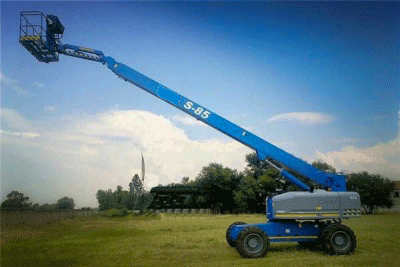Industrial control levers are critical components in a wide array of heavy machinery and equipment. They provide operators with precise and efficient control over mechanical functions, ensuring the smooth operation of industrial processes. These levers are designed to withstand the rigors of heavy use and demanding environments.

1. Manual Control Levers
Manual control levers are the most traditional and widely used type in industrial settings. They require direct operator input to function, offering a straightforward mechanism for controlling machinery. These levers are often found in construction equipment, manufacturing machinery, and agricultural machinery. Their simplicity and reliability make them indispensable in settings where electronic controls may fail or be impractical.
2. Pneumatic Control Levers
Pneumatic control levers utilize compressed air to operate machinery. They are particularly useful in environments where electrical components are impractical or hazardous. These levers are commonly used in industries such as mining, oil and gas, and heavy manufacturing, where explosive gases or dust are present. The pneumatic system ensures safe and efficient operation, even under extreme conditions.
3. Hydraulic Control Levers
Hydraulic control levers use fluid pressure to control machinery. They offer high precision and power, making them ideal for heavy-duty applications such as heavy equipment operations and large machinery control. These levers are often found in bulldozers, cranes, and large manufacturing equipment. The hydraulic system provides smooth and powerful control, even with heavy loads.
4. Electric Control Levers
Electric control levers use electrical signals to operate machinery. They are increasingly popular due to their precision and the ability to integrate with advanced control systems. These levers are commonly used in automated manufacturing lines, robotics, and advanced machinery. They offer a high degree of control and can be programmed to perform complex tasks, making them versatile in modern industrial applications.
5. Joystick Control Levers
Joystick control levers are designed for precise and intuitive control. They are commonly used in applications requiring fine motor control, such as in forklifts, excavators, and crane operations. The joystick design provides ergonomic handling, reducing operator fatigue and improving accuracy. These levers are particularly useful in dynamic and demanding environments where quick and precise responses are essential.
6. Multi-Function Control Levers
Multi-function control levers combine several control functions into a single unit. They are designed to handle complex machinery operations with a single lever, improving efficiency and reducing the need for multiple controls. These levers are often found in advanced machinery and specialized equipment, such as modern construction machinery and industrial robots. Their versatility allows for a wide range of control options, enhancing operational capabilities.
7. Ergonomic Control Levers
Ergonomic control levers are designed with operator comfort and safety in mind. They are shaped and positioned to reduce strain and fatigue during prolonged use. These levers are commonly used in settings where operators spend long hours at the controls, such as in manufacturing plants and large machinery operations. The ergonomic design not only improves productivity but also reduces the risk of injury.
The diversity of heavy-duty industrial control levers reflects the complexity and demands of modern industrial operations. Each type of lever, whether manual, pneumatic, hydraulic, or electric, serves a unique purpose in enabling precise control and efficient machinery operation. By effectively matching the right lever to the application, industries can optimize performance, minimize downtime, and ensure safety in even the most challenging environments. As technology and industrial needs continue to evolve, the future of control levers will undoubtedly bring even more innovation, further enhancing the way we interact with heavy machinery.